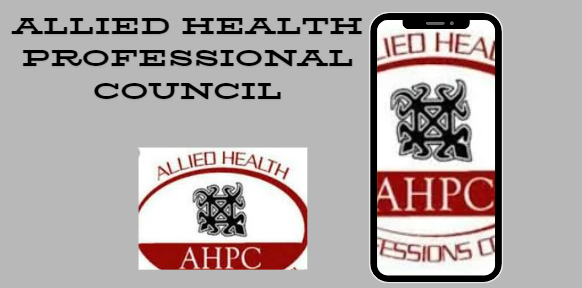
Investing in Food Hygiene?
Today lots of lives are ruined because of the bad Investigation that they may have about Food Hygiene and quality assurance procedures and conditions. But in this guide we’ll learn investing in the domain of food hygiene that may Prevent foodborne illnesses and guarantee the safety of food for consumption involves a broad range of activities. This covers every aspect of food handling, including the hygienic conditions of the workspace and methods for preparing, storing, and serving food. Food handling errors can result in contamination and pose major health risks, so it is imperative to maintain proper hygiene practices.
What is the Meaning of Food Hygiene?
Food hygiene is a comprehensive strategy to ensure food safety throughout its lifecycle, encompassing more than just cleanliness. Among them are:
- Avoiding Contamination: Make sure that hazardous germs, viruses, or substances do not come into touch with food.
- Safe handling practices: involve using the right methods for preparation, cooking, and serving.
- Temperature Control: Preserve food at the right temperature throughout cooking and storage to prevent the formation of microorganisms.
- Personal Hygiene: Stressing the need for people who handle food to wash their hands and maintain personal hygiene.
Creating a safe environment for food production, processing, preparation, and consumption is the fundamental goal of food hygiene.
What is Eating Hygiene?
Eating hygiene refers specifically to the practices individuals should follow while consuming food to minimize health risks. This includes:
- Washing hands before eating.
- Using clean utensils and plates.
- Ensuring that food is cooked properly before consumption.
- Avoid eating in unsanitary environments.
Eating hygiene plays a crucial role in preventing diseases that can arise from contaminated foods or poor eating habits.
What does Good Hygiene mean?
Sanitation and health-related aspects must be kept clean to practice good hygiene. Maintaining clean kitchens and dining spaces is implied in terms of food hygiene.
- Handling food only after thoroughly cleaning hands with soap and water.
- Utilizing clean equipment when cooking; keeping raw materials apart from cooked items to avoid cross-contamination.
Reducing the transmission of infectious diseases is one of the main benefits of good hygiene practices, which also have a positive impact on public health.
What is Food Hygiene for Basic 7?
Generally speaking, the term “food hygiene” for basic 7 refers to seven essential concepts that direct safe food handling procedures:
- Keep Clean: Wash your hands frequently to maintain personal hygiene.
- Keep Raw and Cooked Foods Apart: Keep raw meats and other foods apart to avoid cross-contamination.
- Cook Everything to Safety: To eliminate dangerous bacteria, make sure that every food is prepared to a safe temperature.
- Maintain Safe Temperatures for Food: Perishable goods should be kept at suitable temperatures (below 5°C or above 60°C).
- Use Safe Water and Raw Materials: Make sure all ingredients are free of toxins and come from reliable providers.
- Maintain High Standards of Personal Hygiene: Those who handle food should uphold strict personal hygiene standards.
- Teach Others About Food Safety: Inform those who assist with meal preparation about safe procedures.
These guidelines form the cornerstone of an efficient food safety management system.
What is Good Hygiene in Food?
Good hygiene in food encompasses all practices aimed at maintaining safety throughout the entire process—from production through consumption. This includes:
- Ensuring facilities are regularly cleaned and sanitized.
- Training staff on proper handling techniques.
- Conducting regular inspections for compliance with safety standards.
- Implementing pest control measures within storage areas.
By prioritizing good hygiene practices, businesses can protect consumers while also safeguarding their reputation.
What Are the Types of Food Hygiene?
There are several types of food hygiene, each focusing on different aspects:
- Personal Hygiene: Involves individual behaviors such as handwashing, wearing clean clothing, and avoiding touching face or hair while preparing food.
- Environmental Hygiene: Focuses on keeping kitchens, dining areas, storage spaces, and equipment clean and sanitized.
- Food Processing Hygiene: Pertains to maintaining sanitary conditions during the processing stages—this includes everything from slaughterhouses to packaging facilities.
- Food Storage Hygiene: Involves proper methods for storing both raw ingredients and finished products at safe temperatures to prevent spoilage or contamination.
Each type plays a critical role in ensuring overall safety within the food supply chain.
What is General Food Hygiene?
General food hygiene refers broadly to all practices aimed at ensuring that all types of foods remain safe throughout their lifecycle—from production through consumption—by minimizing risks associated with contamination or spoilage. It encompasses regulations set forth by health authorities regarding how businesses should operate concerning sanitation standards, employee training programs on safe handling procedures, routine inspections by regulatory bodies, etc.
In general investing in the field of food hygiene will help and serves as an overarching framework guiding individuals and organizations toward best practices in maintaining a safe environment for producing, preparing, serving, and consuming food.

by Elizabeth Jimenez




